The recent growth in Functional Play is undeniable, and with it, many questions arise.
As discussed in the latest TFA Podcast, analysing aspects of these tactics through the lenses we have become accustomed to may prove problematic.
The core ideas behind this style, which is most notably found in Fluminense, and to a smaller degree in Real Madrid and Serie A‘s Napoli, tend to shy away from the ones in more positional approaches.
In its nature, and this can vary in degree, the interpretation of space becomes more about relations rather than positions.
Consequently, the overall structure of a team can lose some of the features we have grown to accept as normal.
Asymmetry and shorter distances between players become much more common and significant.
The occupation of space becomes much more spontaneous and uncertain.
That is not to say, of course, that these do not exist in more positional approaches.
Functional Play is not separate from the more positional systems, and vice versa.
To further understand this, it is best to look at Ahmed Moallin’s Route AB, in which he explains:
“The former (A) is necessary for the latter (B) to be understood and seamlessly fluctuated relative to a single start point which can be the domino effect of vacate/occupy. Once initial position is determined, regard for position becomes limited, only technical and temperamental understanding. I believe that 99% of play should be (B) which is born out of the 1% (A). Hence Route AB, not A to B. There is no differentiation, only coexistence and reference. This is the pinnacle of socio-affection.”
All tactics begin from a positional start point (A) and transition into interpretive movement and relations based on various factors (B).
Neither can be entirely removed from football.
However, some systems will give in more to these interpretive relations while others will adhere more to positional references.
Nonetheless, systems are always interlinked in their roots.
Returning to Functional Play, some questions come to light as it grows in popularity.
In a mix between tactical analysis and tactical theory, this article will explore the concept of rest defence in Functional Play.
For consistency, this analysis will focus on Fernando Diniz’s Fluminense as it is currently one of the more extreme examples of this style in world football.
Situational
As discussed, Functional Play becomes more about spontaneous and interpretive occupations of space while the team has the ball.
This has an immediate effect on a team’s structure, or lack thereof, in possession.
Normally, adhering to more positional references, like a Man City would, allows the team to have a clearer and more predetermined idea of who will be where.
On the other hand, rest defence is exactly what it sounds like.
In possession, the team will already be structured and prepared to go into a defensive transition in case the ball is lost.
Some teams will have man-to-man, man-to-man +1, and even zonal rest defences, all depending on their own organisation and tactics.
This is obviously easier to organise when the team remains more structured in possession, with predetermined occupations of space.
However, with such spontaneity and unpredictability, it is more difficult to prepare for defensive transition scenarios when the players are constantly going in and out of different spaces.
But enough of the theory, let’s look at how it plays out on the pitch.
Below is Fluminense in possession, against Madureira in the Carioca 2023.
This is a common trend of their behaviour in possession.
Nearly the entire attacking structure is shifted over on the right half of the pitch, with no players on the left wing (highlighted in the big white circle).
In a much tighter space, the positions become rather irrelevant.
Jhon Arias, one of the forwards, has dropped in where the right-back normally is, while the right-back is further up in the midfield.
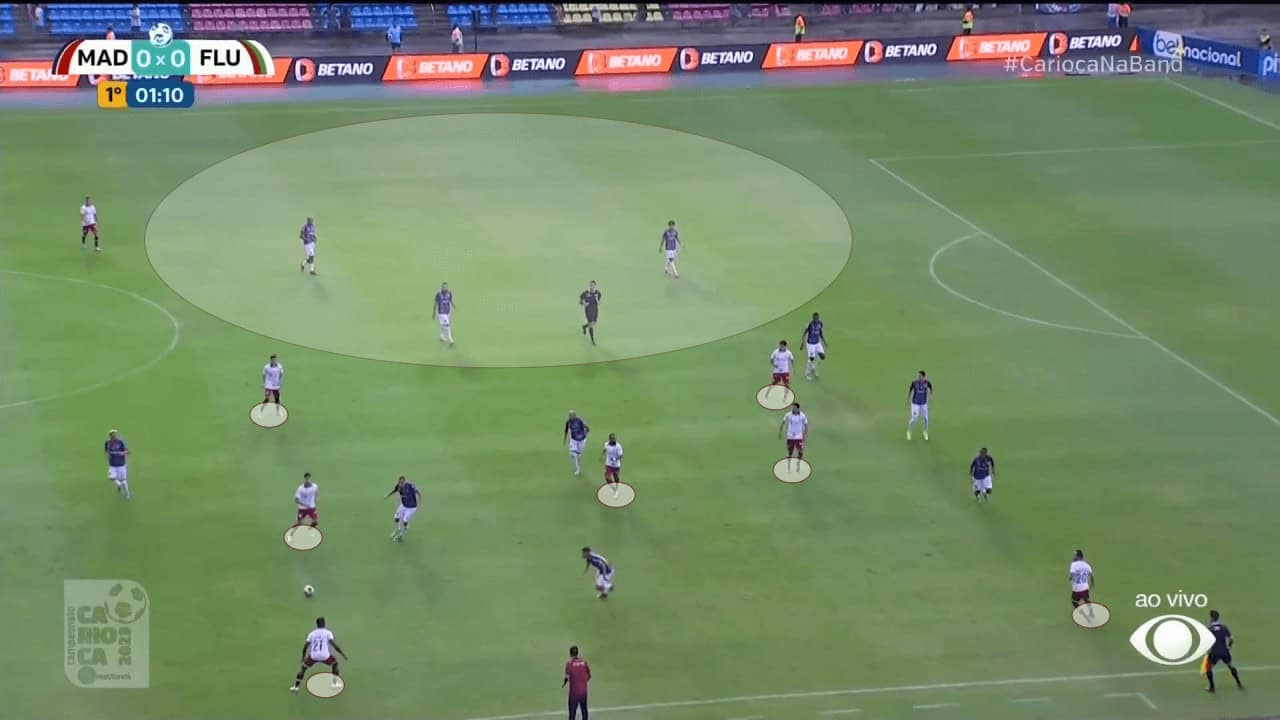
Traditionally, rest defences will have first and second lines protecting the central lanes while the team attacks.
The players closest to the ball would then apply immediate pressure while the second line would prove cover.
The first line can provide further cover behind and remain closer to the halfway line.
This is a general outline, the specifics will of course depend on the type of rest defence, the team’s tactics, etc.
Nonetheless, it can be quite difficult to identify such an organisation in Fluminense’s more chaotic system.
The midfield and the fullbacks are constantly venturing into spaces further forward, and there is not really a conscious effort to organise themselves for a defensive transition while they have the ball.
So how do they do it? The system is interestingly enough naturally very prepared for losing the ball.
The features of Functional Play almost blur the difference between attack and defence.
It then nearly looks like a possession drill, where the team is either retaining or recovering possession in a designated area.
Let’s explore this further.
Minimum width
The lack of maximum width is one of the most obvious features of Fluminense’s possession.
When the team has the ball, there is little effort to expand the pitch entirely.
The players on the opposite side tend to shift inside, almost boxing themselves in.
In the image below, we can see how this looks.
The two widest players on the opposite side are entering the central lane from the half-space – not so wide.
Consequently, they are already in a position to box the opponent in and protect the central areas.
If the ball is lost on the wing, there are players capable of providing immediate pressure as well as players in the central lanes.
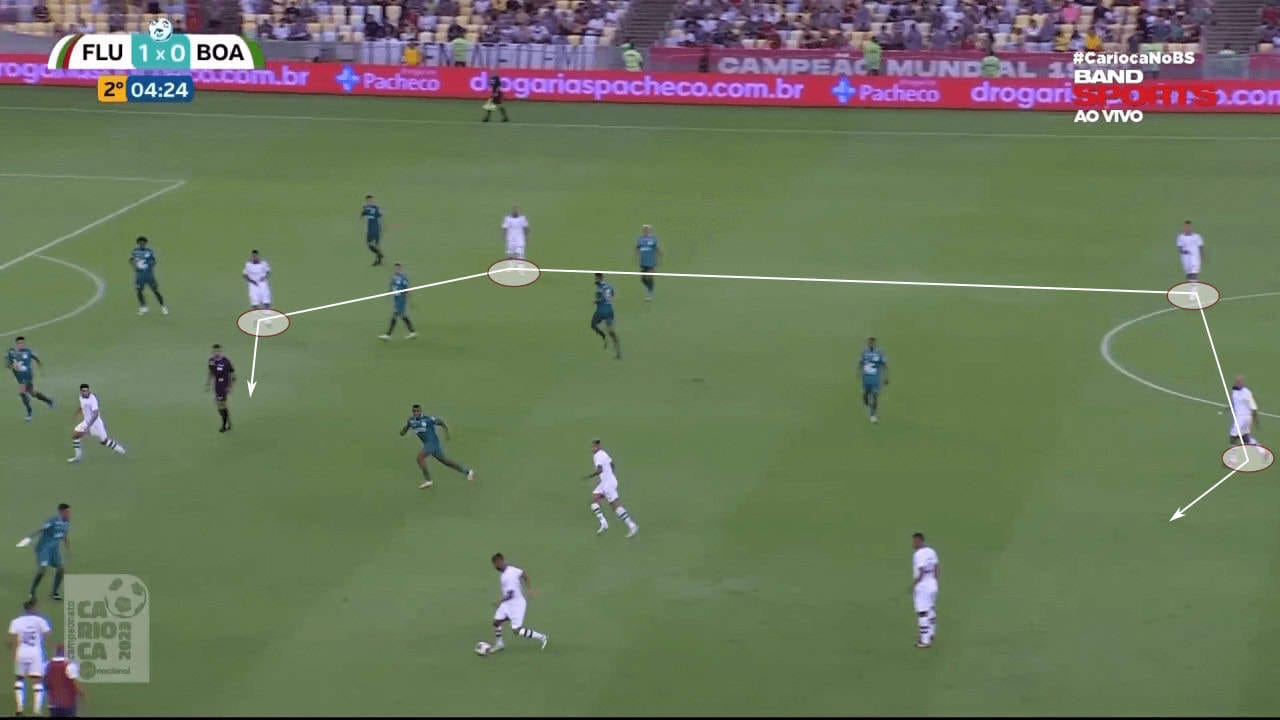
An obvious reason for this will be the behaviour of the opposite fullback.
We can see an example of this with Guga below, against Boavista.
As Flu have possession on the left side of the pitch, Guga significantly shifts inside.
With this movement, he is able to provide immediate pressure and keep the opposition from getting out, should they win the ball.
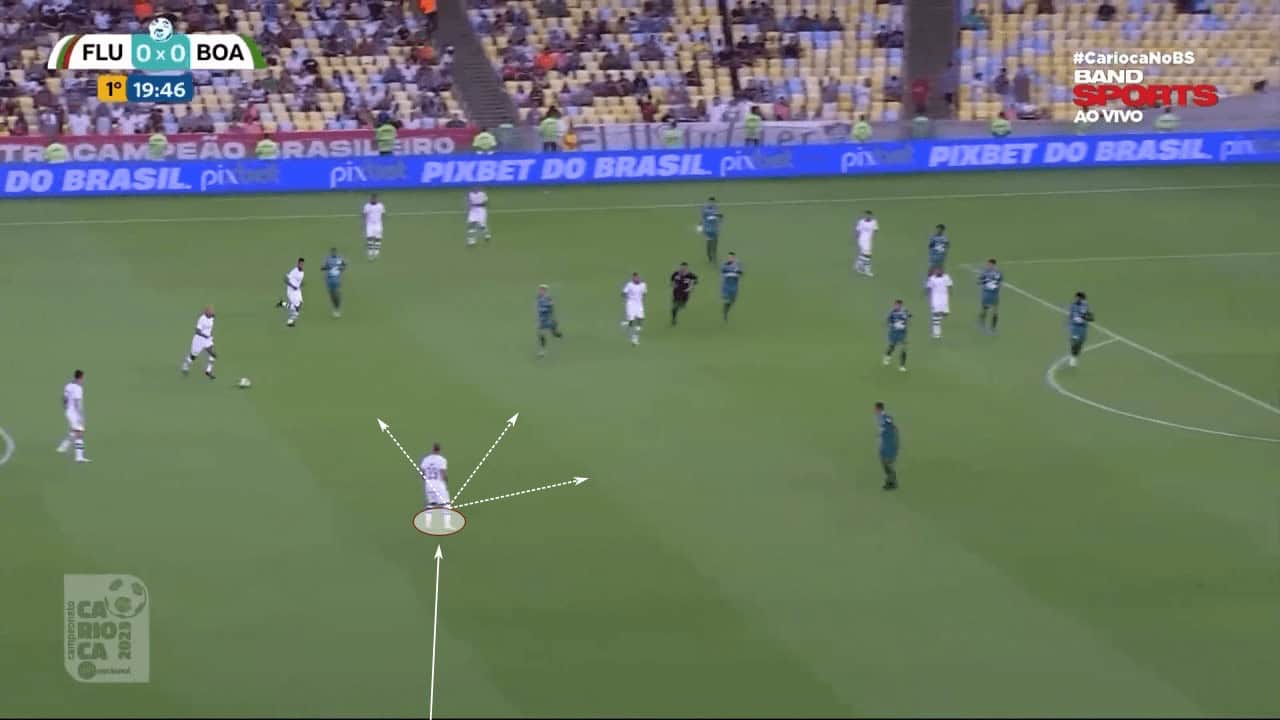
Finally, in this segment against Volta Redonda, we can see how Flu’s rest defence differentiates from the ones we are used to seeing.
As they have possession on the left wing, Nino, the nearest centre-back, is well wide with the ball.
Manoel, the other centre-back, supports him by shifting across.
Due to the previous sequence of events, the player to the right of Manoel is Ganso, the central attacking midfielder.
Obviously, he does not stay where he is and moves inside to get involved in the action.
Normally, the line of three highlighted below would be a common structure to provide balance and support.
Not with Fluminense.
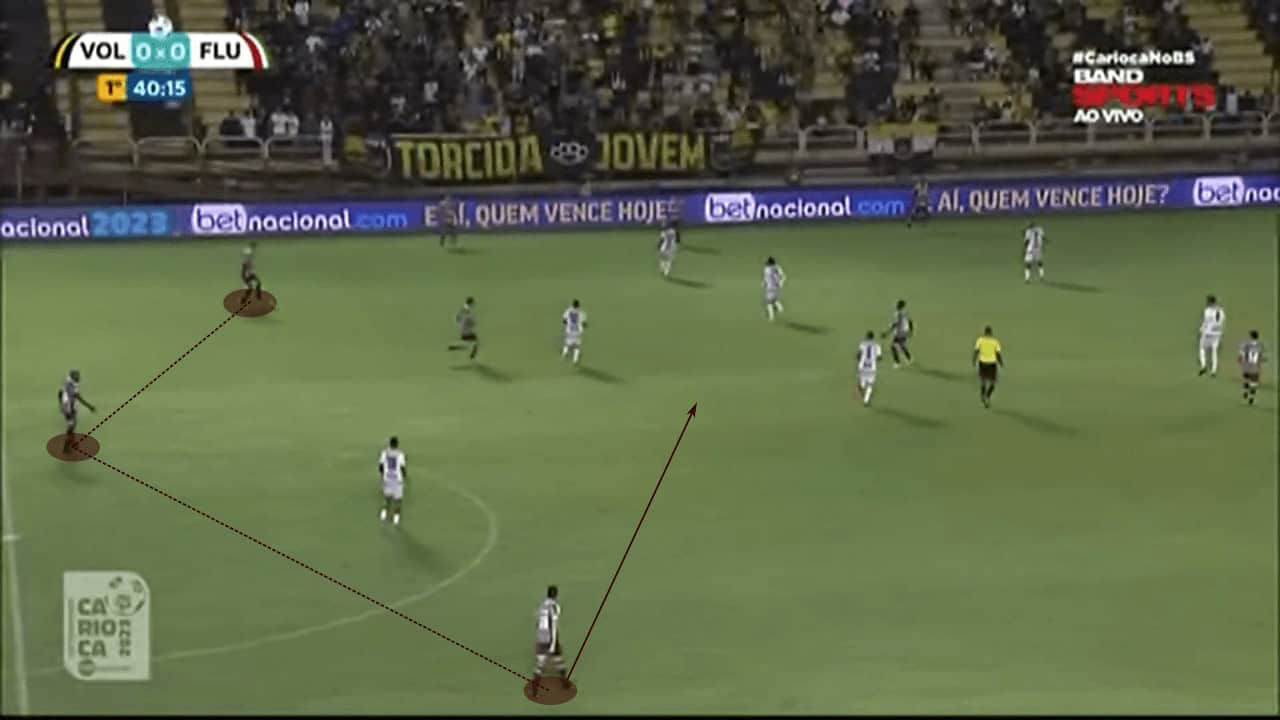
A few seconds later, we can see Flu’s true colours.
Eight of their ten outfield players are in that area.
The right-back has shifted centrally as usual to provide cover and support.
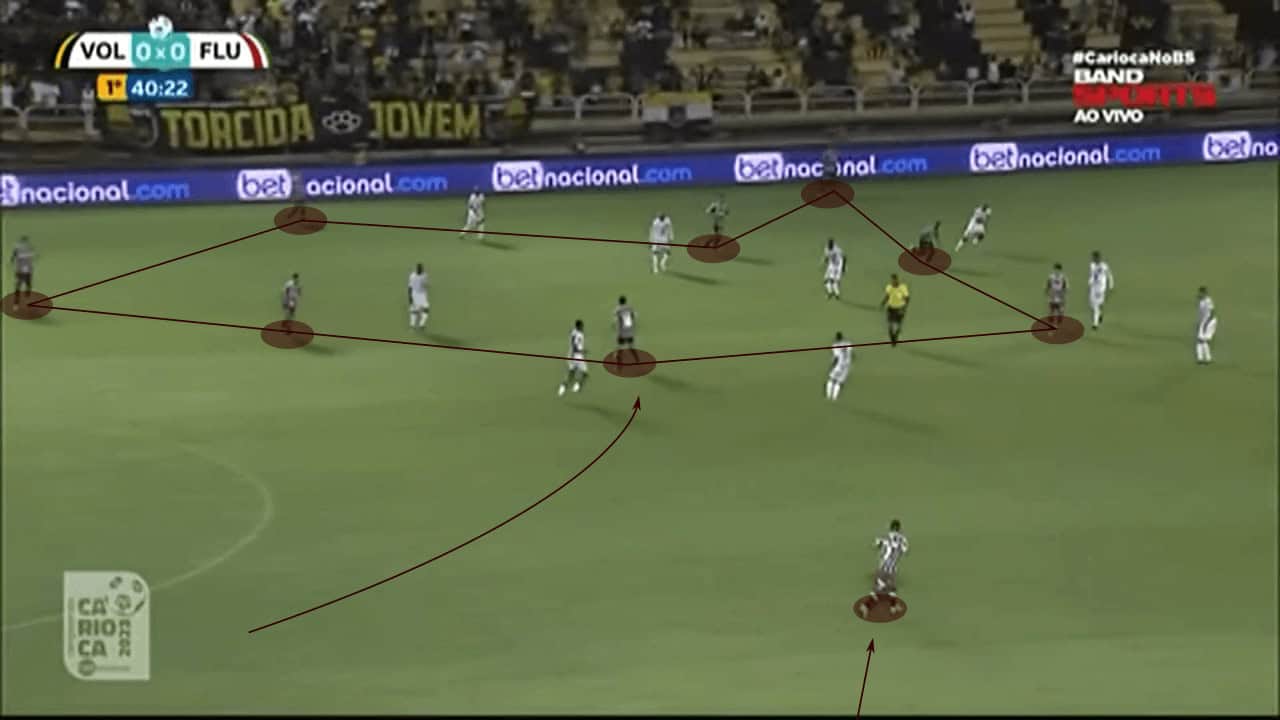
The concept of minimum width is key not only to Fluminense’s possession but also to their defensive transitions.
They are able to protect the central areas and box the opponent in before they even have the ball – it is how they play anyway.
In this approach, counter-pressing becomes an integral part of their possession, it is a built-in system.
Immediate pressure
Now that we understand how their attacking “structure” allows for an effective defensive transition, we can break it down further.
Once the ball is lost, the immediate reaction of the players is to run towards the ball, especially those nearest to it.
Against Volta Redonda again, they have a significant number of players in spaces very near to the ball.
As you can imagine, counter-pressing after losing possession of the ball becomes much easier.
They are able to apply immediate pressure to the ball carrier and close immediate passing options.
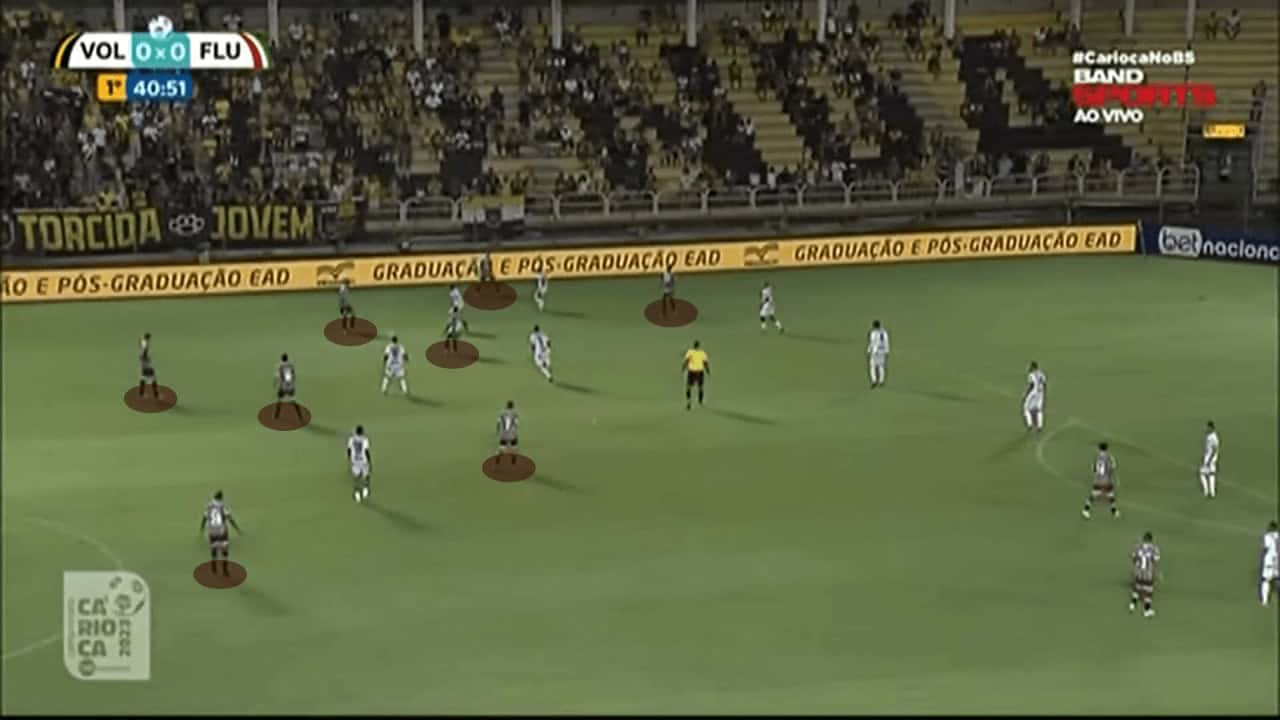
Against Boavista, this can be observed more clearly.
David Braz, one of the centre-backs, has the ball on the left wing.
He has four immediate passing options ahead of him, which would be the players to apply this first wave of pressure.
Behind him, his partner and the defensive midfielder would provide the cover/second wave of pressure.
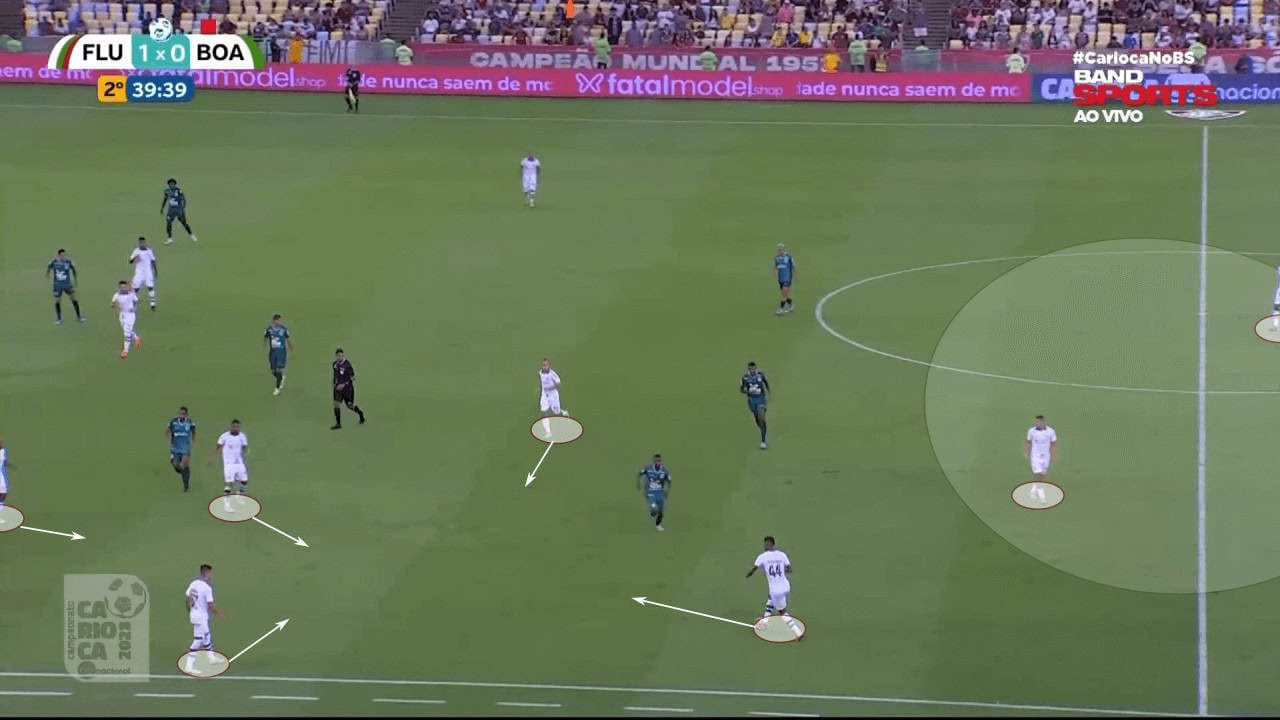
The image below provides a more open and perhaps structured example.
The nearest centre-back and the two midfielders, highlighted by the arrows, would be the traditional second line of the rest defence and apply the first wave of pressure if the ball is lost.
Behind them, the other centre-back, who is out of the image, has no opponent to mark and can provide further cover or pick up any third-man runs.
This example reinforces one of the points made at the beginning of this analysis, about how even more functional sides begin from a positional start point.
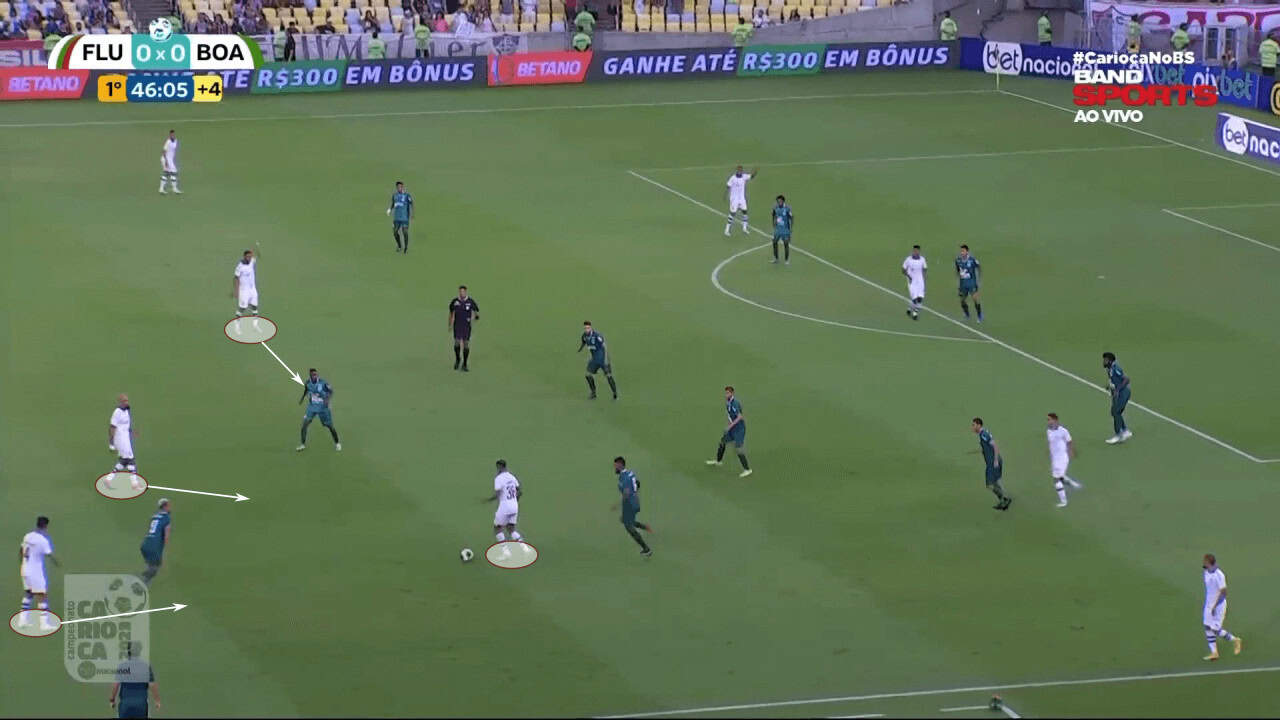
However, with more functional teams, you can also have scenarios such as the one below.
As the play develops on the left wing, they have seven players surrounding the ball.
Similar to how it leaves its positional origin, its rest defence shies away from a more structured organisation (seen above) to a more chaotic and immediate one (see below).
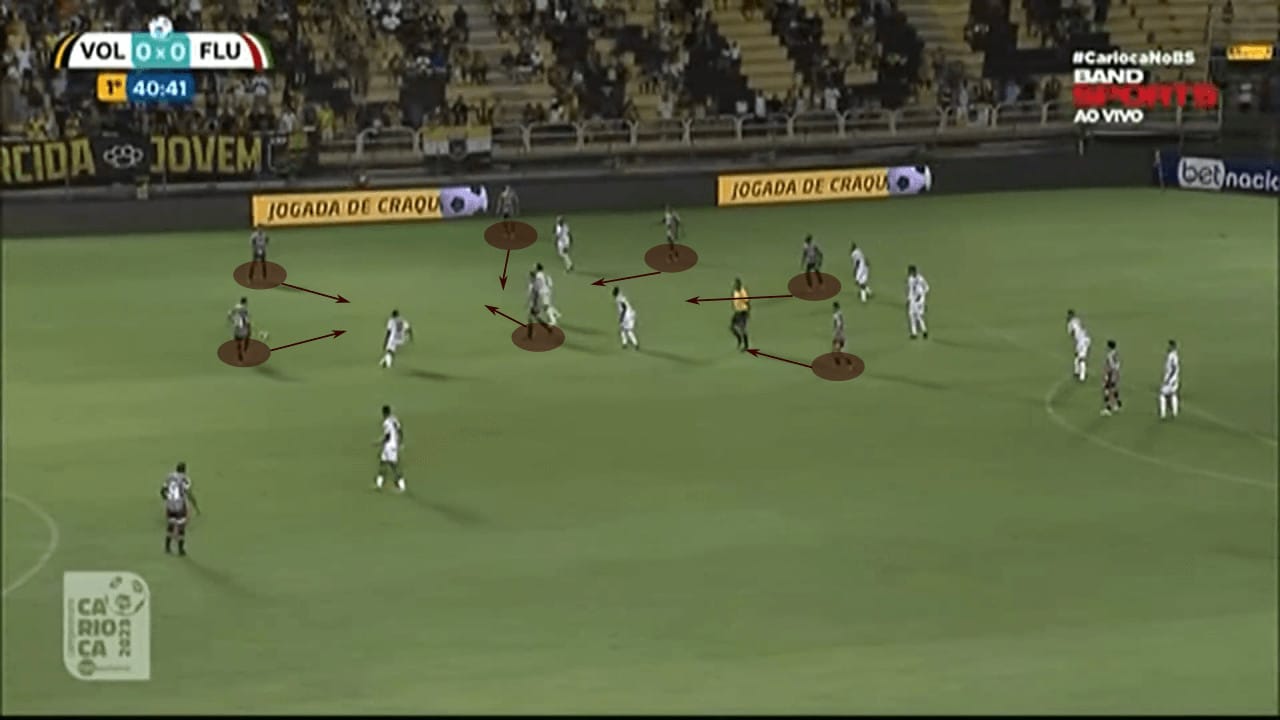
Conclusion
Rest defence is one of the many questions that come to light with the rise of Functional Play.
This style provides a much more distinct approach to possession, and some aspects of it will naturally be different.
As these discussions emerge, it is essential to remember that the two different approaches are interlinked in their foundations.
As with every single system in football, they originate from a positional start point which is then carried out by interpretive movements and relations based on the specific environment.
Some will give in more to these natural developments while others will return to a predetermined positional system.





Comments